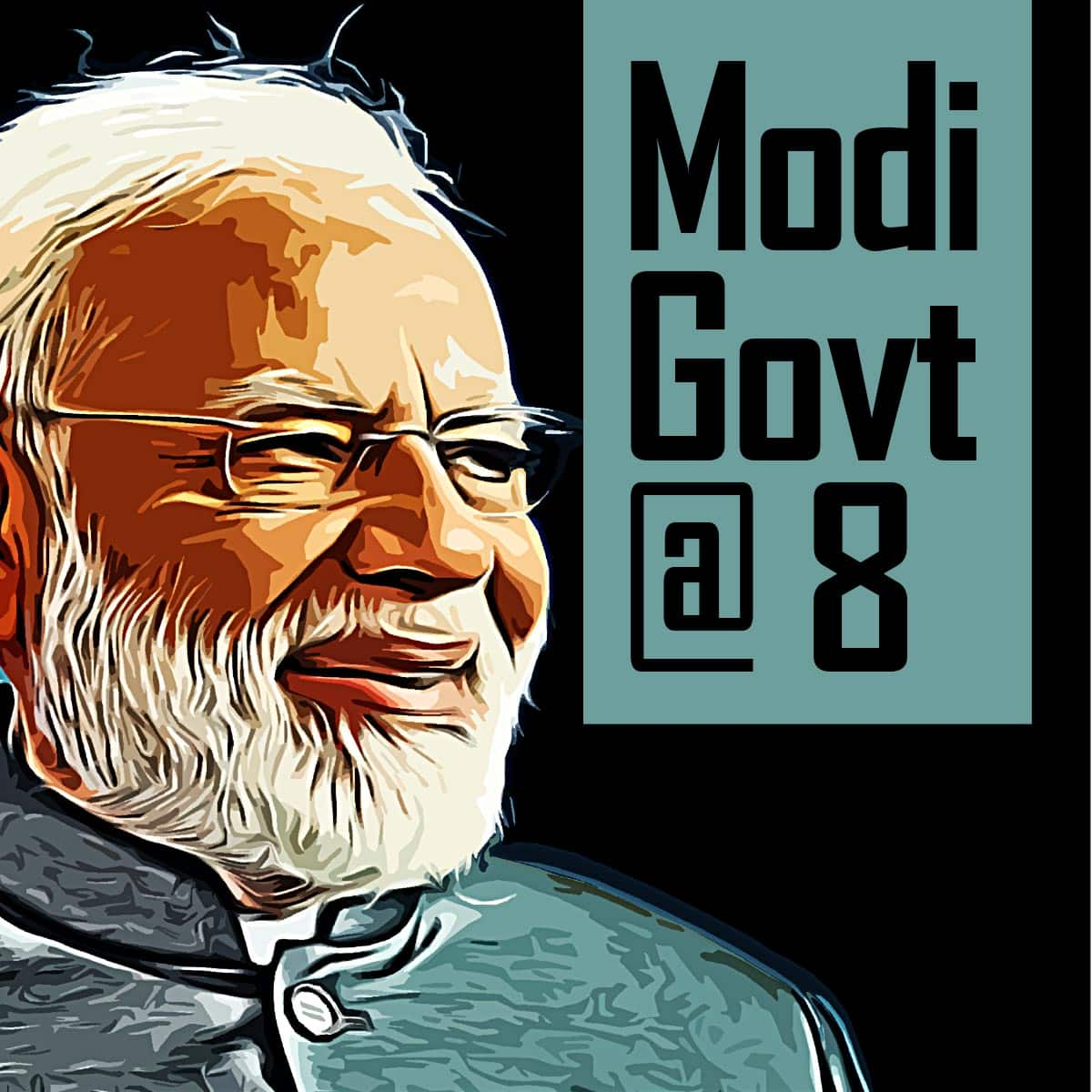



Healthy people contribute physically and intellectually to a nation’s well-being. Yet, successive Union governments since Independence had failed to put healthcare on the national agenda. In the last eight years, the government led by Prime Minister Narendra Modi has made rapid strides towards the creation of an integrated national healthcare system that ensures equitable and affordable access to essential medicines, vaccines, and a plethora of other health services.
Inadequate investment in health had over the years resulted in poor infrastructure and equipment, low doctor-patient ratio, a deficit of trained healthcare personnel, shortage of hospital beds, and poor health data management, especially in rural India. To address this problem, the Prime Minister unveiled the National Health Policy 2017 (NHP 2017) which stated as its goal: “….The attainment of the highest possible level of health and wellbeing for all at all ages, through a preventive and promotive health care orientation in all developmental policies, and universal access to good quality health care services without anyone having to face financial hardship as a consequence…..”

This emphasis of the national policy on preventive and promotive healthcare with universal and affordable access was both farsighted and ambitious.
Also Read: The one chart that shows Modi government’s performance over the past 8 years
Modi Govt @ 8: Key people of the government
Modi’s three Ts in Tokyo — Can New Delhi fit its needs to a T?
The roadmap to reach this vision with traditional approaches included improving the number of healthcare professionals in India (the process started with creation of the National Medical Commission in 2020), better health coverage schemes (the process started with the launch of Pradhan Mantri Jan Arogya Yojana in 2017), and improved emphasis on Health and Wellness (the process started with creation of health and wellness centres in all villages from 2017 onwards).
The government also introduced several healthcare reforms to build a more resilient, agile, and innovative healthcare system. These reforms along with a burgeoning health tech start-up ecosystem enabled by innovation are ushering in next-gen capabilities that will enable India’s healthcare sector to leapfrog into the future.
Leveraging Technology
To tackle the humongous task of transforming India’s creaky health system, the Modi government effectively leveraged the foundational power of information and communications technology (ICT) to create digital platforms that are accessible to the poorest sections of the population, thus empowering patients.
On August 15, 2020, the Prime Minister launched the Ayushman Bharat Digital Mission to develop a robust digital technology backbone, encompassing the unique Ayushman Bharat Health Account (ABHA) health ID, Healthcare Professionals Registry (HPR), Unified Health Interface (UHI), and Health Facility Registry (HFR), to support India’s integrated digital health infrastructure.
Strong private innovation deployed on public digital infrastructure is already ushering in a sea change in public health delivery, and benefiting citizens.
Ushering In The Era Of Digital Health
During the COVID-19 pandemic, India was able to swiftly roll out mass scale platforms such as CoWin and Aarogya Setu, which combined mobile phones, individual IDs, and OTP-based verification to capture key data. India successfully created databases for RT-PCR tests, and vaccination at a scale and sophistication not seen anywhere in the world.
The Modi government’s tele-consultation services, including eSanjeevani, has used ICT to remotely enable diagnosis, treatment, and management of diseases. In March, the eSanjeevani telemedicine service crossed a milestone of 30 million tele-consultations. It also set a record by completing 170,000 consultations in a day. By enabling millions of tele-consultations, it has played a significant role in boosting the acceptance of tele-health services in the country.
Funding Universal Health Insurance
The unveiling of the Pradhan Mantri Jan Arogya Yojana (PMJAY), the biggest government-sponsored healthcare scheme in the world, was a vital first step towards the implementation of universal healthcare coverage as it recognised universal health insurance as an essential component of universal healthcare delivery. This is especially true of India where over 60 percent of the population pay healthcare and hospitalisation expenses from their own pockets as they aren’t covered under any health protection scheme.
Giving Healthcare An AI Edge
The use of machine learning and artificial intelligence for preventive healthcare along with the Jan Aushadhi programme are taking forward the government’s agenda of affordable healthcare for all. The government is ensuring availability of over 1,600 affordable yet high-quality medicines to the general public through ~8,800 Jan Aushadhi outlets across India.
Making India Future Ready
The Modi government has been able to successfully make healthcare a national priority, deliver affordability and accessibility, enable preventive health approaches, and drive value across the complete spectrum of the healthcare ecosystem. It is also helping build a future-ready industry, which is innovative, quality-conscious and can be scaled up to meet global
demand. The last eight years have truly been transformational for Indian healthcare.
Kiran Mazumdar-Shaw is Chairperson, Biocon & Biocon Biologics. Views are personal, and do not represent the stand of this publication.
Discover the latest Business News, Sensex, and Nifty updates. Obtain Personal Finance insights, tax queries, and expert opinions on Moneycontrol or download the Moneycontrol App to stay updated!